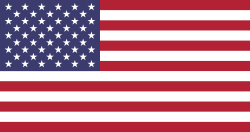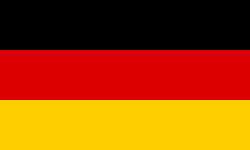We’ve all heard about DIN or ISO. These organizations provide us with norms and standard for all kinds of subjects. This can be fasteners, raw materials, safety regulations or as simple as paper formats (A3 / A4 / A5 / etc. ). These norms are carried out according to set rules of procedure by the relevant committees within the DIN / ISO / etc. organizations.
And then there is the ETRTO, which stands for European Tyre & Rim Technical Organization. In other words, the ETRTO is the European norm which provide us with a set of rules for tyres and rims.
Also, ETRTO works in liaison with the International Organization for Standardization (ISO) to develop relevant standards.
From 1956 to 1964, it was known as the ETWTC (European Tyre And Wheel Technical Conference), and since 1964 it’s called the ETRTO. As the ETRTO states in the current ETRTO constitution (oct. 2019), their principal objects are;
- To further align of national standards and ultimately to achieve interchangeability of pneumatic tyres, rims and valves in Europe as far as fitting and use are concerned.
- To establish common engineering dimensions, load / pressure characteristics and operational guidelines.
- To promote the free exchange of technical information appertaining to pneumatic tyres, rims and valves.
Since tyres are recognized as making a major contribution to road safety, ETRTO is active in its contacts with national and international organizations and legislative bodies in order to make appropriate recommendations. However, the activities of ETRTO are strictly confined to technical aspects of tyres, rims and valves as far as fitting and use are concerned.
Source: https://www.etrto.org
When you search the net for ETRTO, you’ll find it mostly related to cycle tyres. The ETRTO doesn’t stop there though! They have standards for a broad variety of vehicles, such as cars, motorcycles, commercial vehicles, earthmoving equipment, agricultural and even aircraft tyres.

Aftermarket car wheels -rim and tyres- are also standardized.
How does this benefit us?
Standards define what great looks like, setting consistent benchmarks for businesses and consumers alike — ensuring reliability, building trust, and simplifying choices.
Starting with the simplified choices; there is a limited range of sizes to work with. This helps us keep our products manageable, while still giving more than enough options.
You may have noticed that tire sizes have many similarities. The size notation is the same almost everywhere (e.g. 180/55 R17), there are standard sizes (110, 160, 180 tire width), load and speed notations, and the rims are standardized at certain tire sizes. Even the valves are standardized. This is all made possible in part by the ETRTO.
Because tires and rims are all standardized, you can assume that parts from different manufacturers will fit together. So imagine you have original wheel in your bike, and you want to mount a nice set of Tulmo rims. Then you should be able to easily swap the old tires to your new rims.
Unfortunately, this is not yet the case for motorcycle dimensions, which would make our job a lot easier!
Why are you telling me this all?
It is important to us that the products and services we provide are safe, reliable and of high quality. This is why we use the ETRTO standards when designing and manufacturing our rims.
We also want to inform you about what standards are, what ETRTO stands for, how they influence our designs and choices, and how you benefit from them.
So have we sparked your curiosity, and do you want to know more? Or do you have a opinion on the subject? Share it with us in the comments!


